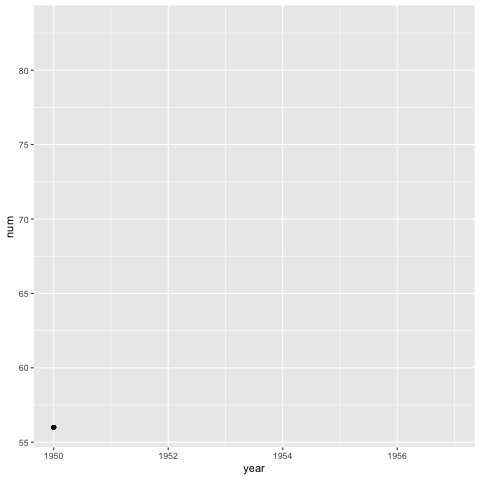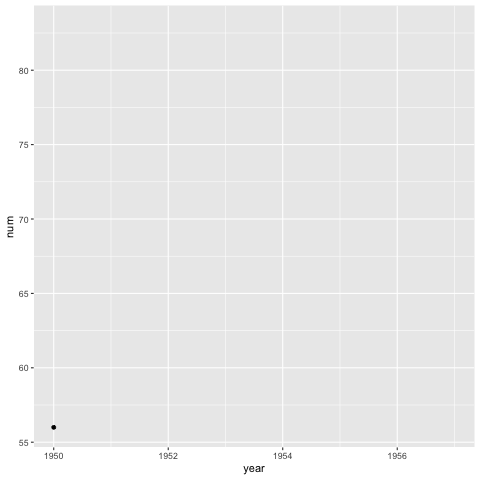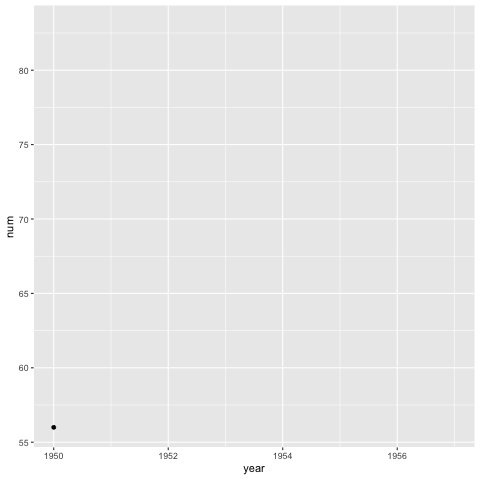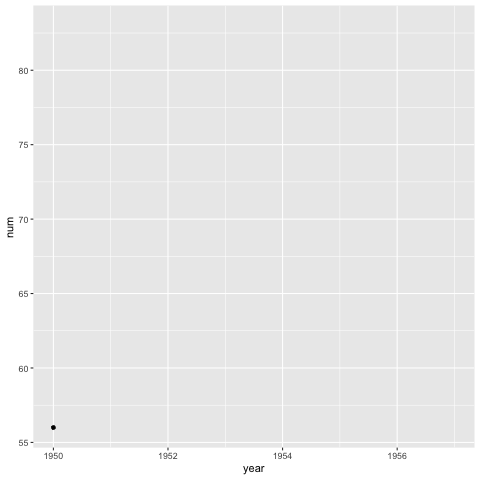hi all,
first I created an animated plot for a very simple time series line plot... Some example data:
library(dplyr)
library(gganimate)
library(tweenr)
data <- tribble(
~year, ~num,
1950, 56,
1951, 59,
1952, 64,
1953, 67,
1954, 69,
1955, 74,
1956, 78,
1957, 83
)
dat_ani <- data %>%
ggplot(aes(x = year, y = num, frame = year, cumulative = TRUE)) +
geom_path() +
geom_point()
gganimate(dat_ani)
so, just using gganimate is fine but I want to go a bit further by using tweenr for smoother transitions.
Knowing how tweenr uses interpolation I want a data frame similar to above but looks closer to this (just looking at in between 1950 and 1951):
data2 <- tribble(
~year, ~num,
1950.0, 56.0,
1950.1, 56.3,
1950.2, 56.6,
1950.3, 56.9,
1950.4, 57.2,
1950.5, 57.5,
1950.6, 57.8,
1950.7, 58.1,
1950.8, 58.4,
1950.9, 58.7,
1951.0, 59.0,
)
but with all the other interpolated years and data points. I tried another way with tween_elements() function but that didn't work (I think because x, time, and id were all the same variable...).
I am stumped on how to create a list of these data frames to use as the input for the tween_states() function.
I've tried:
df_fun <- function(i) {
dat <- data %>% subset(data$year[i])
return(dat)
}
df_list <- purrr::map(seq(1950, 1957, by = 0.2), df_fun)
tween_data <- tween_states(df_list, tweenlength = 2, statelength = 3,
ease = "linear", nframes = 200)
among other attempts but of course this doesn't work as there is no year == 1950.2, 1950.4, etc. in the original data frame...
any help would be appreciated!





